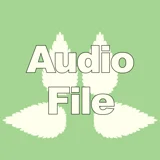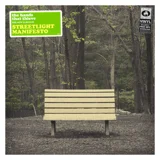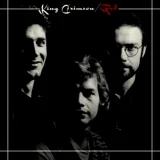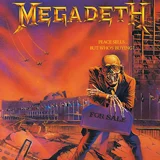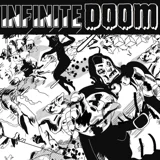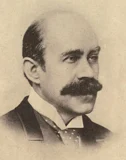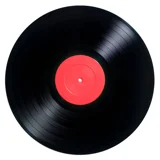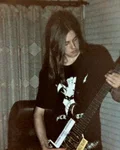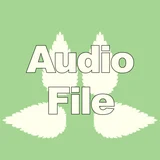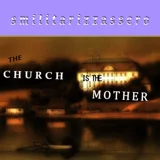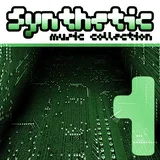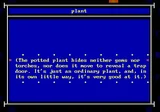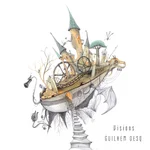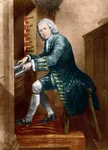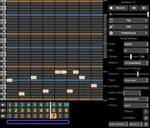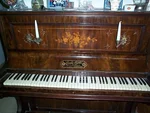Before the internet became the dominant way to consume music, record stores were the primary place to obtain it. Sometimes, when the album art is aesthetically pleasing, you will want to check the album out. This thread I will start.
>Band
Acid Age
>Album title
Like a Runaway Combine Harvester in a Field of Crippled Rabbits
The album art is bad because the band is trying to look rad but ends up looking stupid. Animal cruelty is also not giving the art any choice.
Console:
X
CLEAR CONSOLE
/mu/ - Music
Dream_Com...jpg
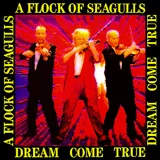
(94.66 KB
300x300
)

>A Flock of Seagulls
>Dream Come True
I can't see the dream!
R-1446952...jpg
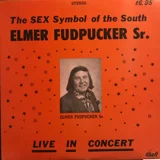
(93.80 KB
600x600
)

>Elmer Fudpucker
>The Sex Symbol Of The South
The coloring makes it look like something I'd see at a flea market.
>>450
hes so ugly...
>>451
He is a stud amongst blind women.
the-bee-g...png
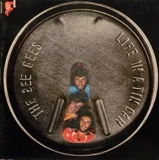
(521.99 KB
600x604
)

>Bee Gees
>Life in a Tin Can
More like life in the trash.
Kinda unsure who in this day and age is still listening to Funkot but I wanted to make a thread since I was lurking the tag on nico nico https://www.nicovideo.jp/tag/funkot and I really fell in love with how unique some of them sound especially the ones using IM@S 1-2. If I had to guess this Shibamata MAD is probably one of my earliest introductions to it: https://youtu.be/FIw-HUP7XK0 [Play]
https://id.wikipedia.org/wiki/Funkot
>Funkot (short for "Funky Kota") is a genre of electronic music that emerged in the 1990s. This music is a combination of House music with tempos ranging from 160 to 220 bpm (beats per minute). There are many other names for this genre, such as "Hardfunk," "House Kota," "House Music," "Indonesian House," and "Indonesian Hardcore."
https://dic.nicovideo.jp/a/funkot
>Main Characteristics
>Very high BPM, typically around 180-190, with some DJ performances pushing it to 190-200 BPM.
>Distinctive "Dotta Dotta!" funky beat.
>Thick, repetitive basslines, often layered with three different sounds.
>Heavy use of sampled voices like "Are you ready!" or "Deejay!"
>Frequent use of cowbell-like percussion.
>Sudden BPM drops mid-song, shifting the track into what seems like a completely different song (downbeat).
>Not all of these features are mandatory; there are songs without vocal samples. Original tracks, as well as remixes of Western pop, Japanese pop, and theme songs from anime or tokusatsu shows, are common. More recently, Funkot has incorporated elements from global EDM trends.
You can for example post about any good Japanese funkot albums from here: https://doujinstyle.com/?p=search&source=1&type=tags&result=Funkot2 replies (and 13 file replies) omitted. Click here to view. (Bump Limit: 250)
>>454
Given how random as fuck some of these song/soundbyte choices felt I thought it was initially another shitty track by DJ Sharpnel lol
映像なんてオマケな...mp4

(22.74 MB
640x360
00:04:27)

Man I really love this one so much especially the visual portion. I wasn't 100% sure if that was Makoto at the start either.
jubeat収録曲...mp4

(14.75 MB
512x384
00:05:20)

The Dark Fairy drives me crazy...
I downloaded more than 20 different doujin funkot albums by random japanese artists and while listening to the tracks over the past few months I gotta say that they are extremely BORING compared to the funkot tracks that were uploaded to nico nico back then.
...
sons of bitches sons of bitches sons of bitches
159012268...jpg

(179.51 KB
1422x792
)

I wanna know what the 22chan populous listens to! perhaps post a song a day or otherwise every time you visit. And be sure to discuss posted tracks with conviction!!! Here's hoping for eventual youtube embeds. I'll Start:
Corporeal Face: To Make It
https://www.youtube.com/watch?v=9jUpOcbq728 [Play]
The drums in this are addictive and I love how every part is distinct in that no two sections sound exactly the same. I listen to a lot of drum & bass and acid techno, not exactly the same, but this is definitely my favorite track of its kind80 replies (and 32 file replies) omitted. Click here to view. (Bump Limit: 250)
A good song on what kind of attitude you should have towards normalfags.
https://www.youtube.com/watch?v=A9Ga0y7TrJM [Play]
I love how the engaging the emotion in this song is. It keeps you engage and the seven minute length goes by so fast. It is progressive yet simple. The song perfectly evades being cheesy.
https://www.youtube.com/watch?v=uSTIiqKxRqQ [Play]
52e6d54a4...jpg

(155.55 KB
640x426
)

Post music that you listen to while browsing 22chan. better yet, Find music that reminds you of a 22chan board, represents the site as a whole, fits a thread well, or even makes your own if you please. this isn't a general so don't feel like you have to isolate or limit something to this thread.
https://www.youtube.com/watch?v=G-Vg2YS-sFE [Play] this song reminded me of /yu/8 replies (and 2 file replies) omitted. Click here to view. (Bump Limit: 250)
Internet_...mp3

(5.88 MB
00:02:33)

>>400
From the "/mu/ makes some more tunes" thread
>>>/mu/5
>>400
I feel like this song matches the 4chan spirit.
https://www.youtube.com/watch?v=DAo6p1fls1Y [Play]
This is a song for /sewers/ when a ur mom jokes or someone dies.
https://www.youtube.com/watch?v=b9JfhANM9B0 [Play]
vocaroo-s...png

(39.20 KB
434x109
)

It can be just you playing your instrument, some music you're working on or anything really!
Here's a short thing I played on the kalimba: https://voca.ro/1er65ZKPXALe [Play]
(You can use vocaroo.com to record in your browser)51 replies (and 32 file replies) omitted. Click here to view. (Bump Limit: 250)
>>344
Ah cool, the ones that sang that Christmas Snoopy/Red Baron song. Yeah, I was definitely aiming for that post-Beatles effect, like '96 Tears' or 'Year 2525'.
>>410
This sounds like something you'd hear on a youtube channel where they do a montage or showcase a random object
>>410
Unadulterated grooving
71oyI2Vjr...jpg
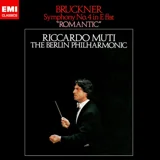
(47.69 KB
1000x1000
)

soilwork-...png

(561.71 KB
600x603
)

This is awesome thrasher/melo death release.
a27679358...jpg

(82.22 KB
700x700
)

In celebration of 22ch being brought back from the dead we should get the band back together, post ur tunes in a catbox and tell the fag who has the 22chan bandcamp to fire it back up
https://files.catbox.moe/6faufy.mp3 [Play]27 replies (and 8 file replies) omitted. Click here to view. (Bump Limit: 250)
>>275
It is really outstanding
>>257
HOLY SHIT I CANT BELIEVE THIS GOT RELEASED GOOD JOB GUYS
i made this thread so long ago im pretty sure i used both of my beats in other places (2 and 9),
also nice to see the sewerfolk i wrote is still around, im still missing the art i made of a gator in a sewer playing a guitar, i had my own lil symbol on so id be able to prove it was mine if the time ever came
>>277
Nice seeing you around m8, singing the sewerfolk stuff was fun. Originally I took twoot's stuff from some other place as well so don't worry
>>23
necrobump, but god I remember making this... I'm glad I've improved since then, the mixing is a complete mess. the rest of the album is great though, good job anons.
>>422
Yeah i'll never forget the day the album finally released, it was nice the album was actually finished.
It sounds so strange, nonsensical, or hypnotic that it feels like someone created it after receiving some invisible, mysterious broadcast from outer space. It's a brainwashing device disguised as music. Once you listen, you start tuning into the same strange frequency.
https://denpa.omaera.org/ (English Guide for Denpa.)
https://dic.pixiv.net/a/電波ソング (You might be surprised to learn what songs are considered Denpa.)
yeah!! Denpa!!!
Some of my favourites
https://www.youtube.com/watch?v=Goqk3hpL16E [Play] Not sure how many times I've listened to this track but it makes feel extremely relaxed to the point where I fall asleep.














